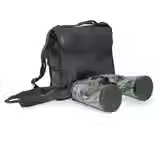Buy six-color filters universal 1.25 inch , fits all telescope eyepieces with threading below to accept these filters
Include:
12: Yellow 82A: Blue
21: Orange Moon&Skyglow: Purple
23A: Red Green
82A: Blue
#12 YELLOW Filter 1.25"Enhances : Lunar surface detail , low contrast cloud detail on Venus ,definition of comet heads and dust tails ,Maria on Mars ,orange and red belt features on Jupiter and Saturn , detail on Uranus and Neptune in larger scopes.
#21 ORANGE Filter 1.25"Enhances: Lunar terrain, Martian surface features in small scopes, contrast on Mercury and Venus in daylight, bands and festoons on Jupiter and Saturn.
#82A LIGHT BLUE Filter 1.25"Enhances : Orange and purple cloud belts of Saturn and Jupiter ,Lunar surface detail , comet tails , suppresses chromatic aberration in refractors
#23A LIGHT RED Filter 1.25"Enhances: Lunar surface detail, reddish areas, plains and Maria on Mars, blue clouds and polar areas of Jupiter and Saturn, Mercury and Venus in daylight and twilight. Martian surface detail in larger scopes, the contrast of Mercury against the blue sky, contrast and cloud definition of Venus, bluish clouds of Saturn and Jupiter, the contrast of Saturn’s rings, reduces the effect of light pollution on b/w photos
#56 GREEN Filter 1.25"Enhances : Lunar surface detail , contrast of Red Spot on Jupiter ,contrast of subtle red and blue hues , melt lines around polar caps of Mars , brighter comets , Venusian cloud patterns
Planetary (Color) Filters
Backyard observers also utilize an array of color eyepiece filters to glean subtle features on the planets. Earth's atmosphere is in constant fluctuation; turbulent air currents blur fine surface detail on solar system objects, like planets, viewed through a telescope. Faint, contrasting areas blend together due to irradiation - distortion of the boundaries between light and dark areas. Using color eyepiece filters can help reduce such distortion.A color filter zeros in on a narrow region of the spectrum, reducing the scattering of interfering wavelengths. Because many planets have a characteristic color (e.g., Mars is reddish), a filter can dramatically increase detail by reducing the predominant hues and uncovering hidden contrast and surface markings. That's why the Red Planet is most effectively enhanced with a green filter. Each color eyepiece filter passes its characteristic color of light while blocking complementary colors. For example, green objects will appear bright (pale) through a green filter, and dark through a blue or red filter. Red features will appear bright through a red eyepiece filter and dark through a green or blue eyepiece filter.
Telescope eyepiece filters thread into the barrel of an eyepiece. Usually the aluminum cell holding the filter is threaded such that two or more can be "stacked," to achieve simultaneous filtering of more than one color.
Color filters go by their "Written" numbers. Here is a rundown of the color eyepiece filters that are useful for enhancing detail on each planet and some other objects.
Moon Filters
Believe it or not, you're also dealing with bright, albeit reflected, sunlight when you turn your scope on the Moon. A noncrescent Moon will consistently leave spots even in a hardened lunar observer's eyes, although this will not damage your eyes.To tone down the glare, a Moon filter can be used. This inexpensive accessory threads into a telescope eyepiece and blocks a large percentage (typically over 80%) of the light, making for more comfortable viewing and bringing out more lunar surface details.
top of page
₹2,800.00Price
Related Products
bottom of page
































